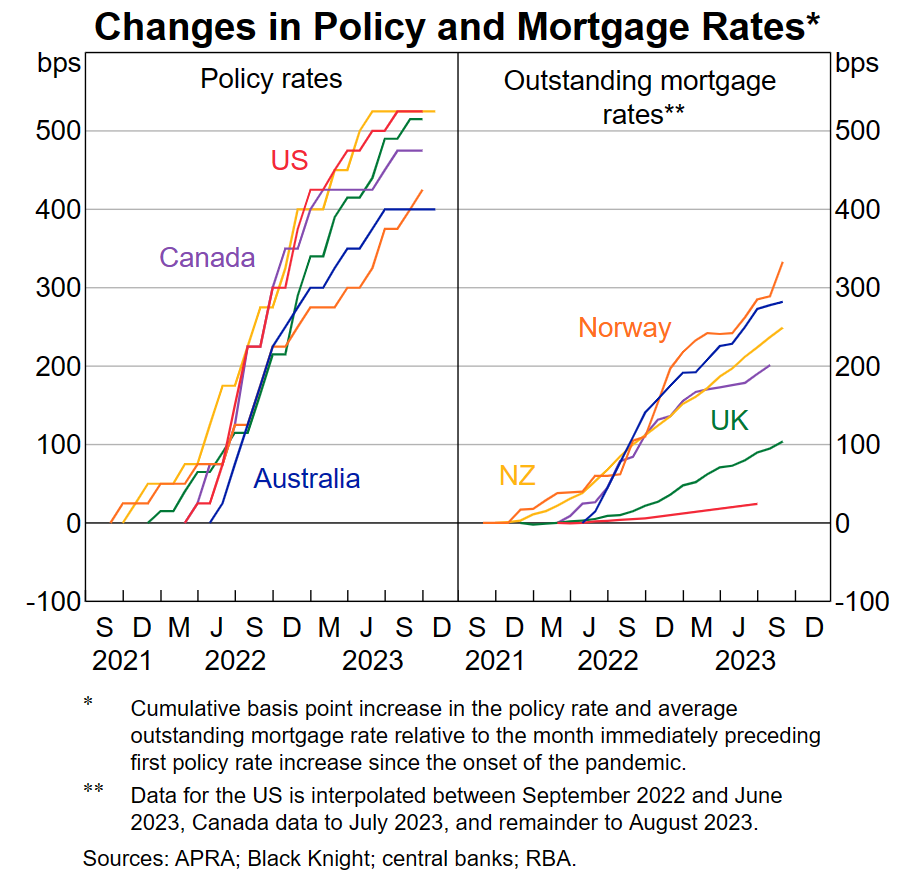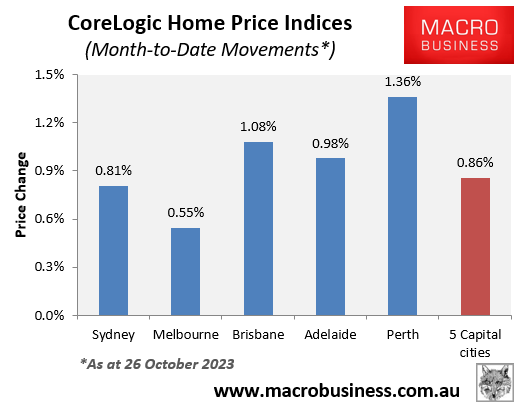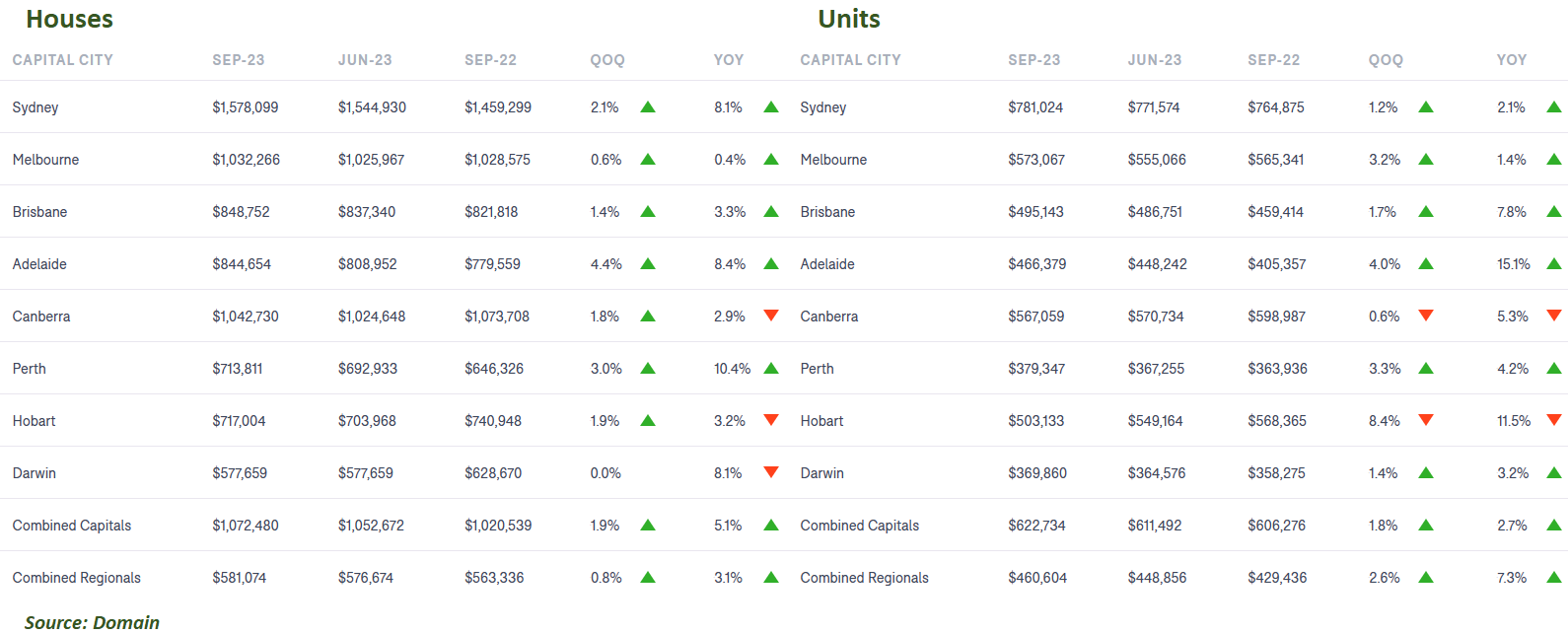Australian house prices continue to rebound strongly in the face of massive rises in mortgage rates:

CoreLogic’s daily dwelling values index has risen by 0.86% so far in October, led by the smaller major capitals:

This has taken the rebound to 9.2% at the 5-city aggregate level since values bottomed in late January:

Separate house price data from PropTrack shows that home values hit a new record high in September after recovering all of the losses incurred after the RBA began its interest rate tightening cycle in May 2022:

On Wednesday, Domain released its September quarter house price results, which showed that capital city house prices rose by 1.9% over the quarter to be up 5.1% year-on-year, whereas unit values rose by 1.8% over the quarter to be up 2.7% over the year:

Commenting on the results, Domain’s chief of research and economics, Nicola Powell, noted that home values had almost fully recovered from the recent downturn and were on track to hit record high levels by the end of the year.
She cautioned that another interest rate rise would crimp borrowing capacity, but that it would not derail the recovery:
“Another lift in interest rate is a concern because it will increase the cost of debt and reduce borrowing capacity further, but a lot of people have already priced in another rate hike, so it’s unlikely to significantly impact demand”.
“It’s also worth noting that the housing market moved into recovery at a time when the RBA was raising interest rates aggressively and when consumer sentiment was deeply negative”.
Powell, therefore, expects that house prices will continue rising at a subdued pace, citing factors such as an increase in listings and reduced borrowing capacity:
“Stretched affordability is playing a role in containing the pace of growth. Cost of living pressures, higher mortgage costs and a higher serviceability buffer (at 3ppt above mortgage origination rate since late 2021) limit borrowing capacity and make it hard for some to qualify for a home loan as prices have nearly recovered”.
“Choice has also risen for buyers as sellers regain market confidence and pent-up supply makes its mark”.
“New listings have improved, and September’s auction volumes reached a 16-month high. Nationally, total supply is now 5.1% above July’s low (6.5% higher across the combined capitals), although it remains lower annually and compared to the five-year average”.
“We’re expecting prices to continue rising, but at a much subdued pace due to increased listings and reduced borrowing capacity”.
Australia’s house price rebound has been highly unusual since it has occurred alongside a circa 30% reduction in borrowing capacity following 4.0% of rate hikes from the RBA:

Source: Shane Oliver (AMP)
However, unprecedented levels of net overseas migration have driven the rebound, which should continue even in the face of another interest rate hike.
But affordability constraints will bite sooner or later if the RBA does not commence an easing cycle.

